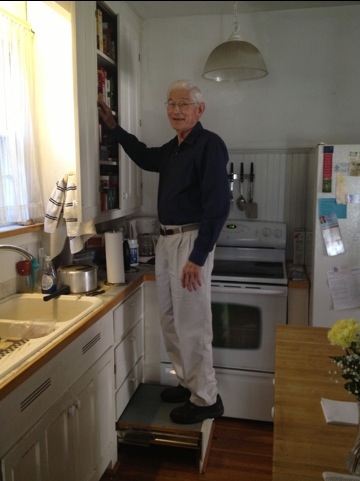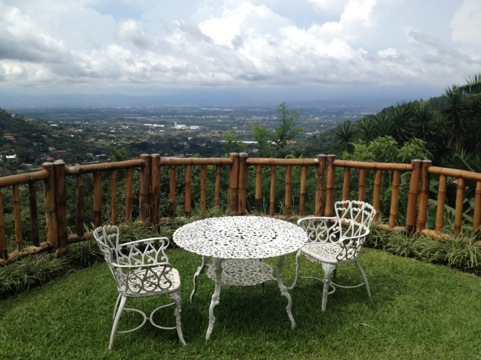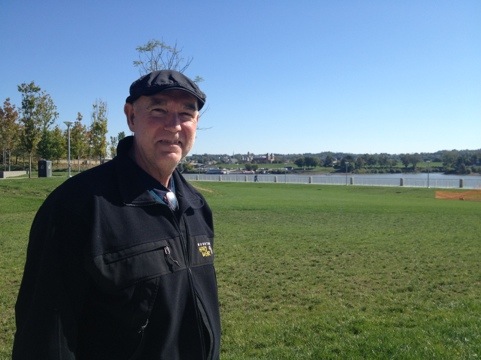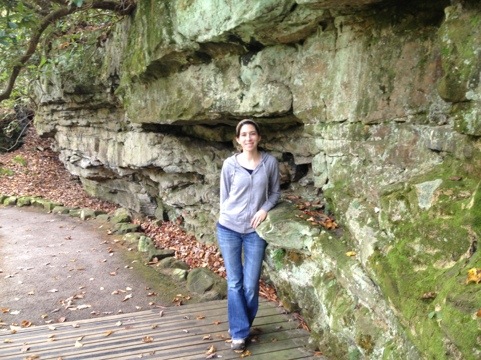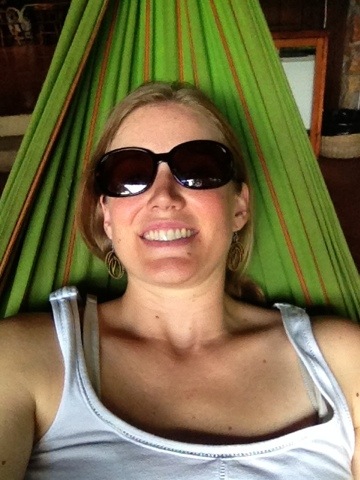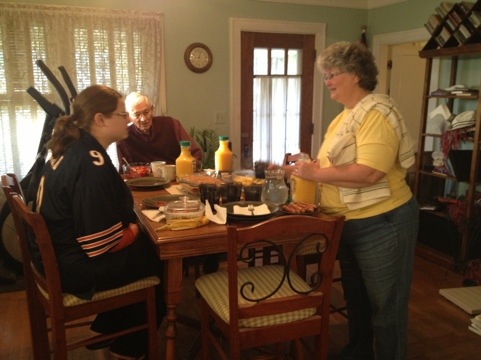It’s a rainy night in Costa Rica. I’m in a town called Santa Ana visiting the family that I lived with when I studied here nearly 14 years ago. After a couple of weeks away from the busyness of work and the responsibilities of home, I’m feeling pretty peaceful.
I just finished reading Orange is the New Black, and after reading about the author’s experience of a year in federal prison, I feel humbled to be a part of this mess we call life and all of its uniqueness. In her book, Piper Kerman describes humanity and the importance of connection so well. Her experience shows how resilient we are as humans and that we can survive most anything as long as we’re able to love and connect with other human beings.
The centering thought from one of the guided meditations I did last week was about “cherishing every connection.” And that’s mostly what the last couple of weeks have been about for me- connecting with other people, myself and the world around me.
On a road trip to Pittsburgh for the annual Passive House conference last week, after camping near Cumberland Falls, I got to spend some time in Kentucky and share ideas with Ginger Watkins, a new friend, architect and a great advocate for Passive House. I’m excited about the possibility of us working together- it’s so helpful to have the support of someone who’s experienced in working with Passive House. After our meeting, I headed to Westerville, OH to visit some cousins and my great uncle, all of whom I hadn’t seen in 10 years or so. It was really fun getting to know my cousins and their spouses a little more, catching up, sharing stories and looking at old pictures. My great uncle lost his wife (my grandmother’s sister) on the day of their 59th wedding anniversary last year, so I wanted to know that he was doing ok. It was really special to spend some time with him and to see all the projects he and my grandad had worked on together in his home. He was an architect who designed some beautiful buildings around Westerville, and he and my grandad were experts in working with what they had. He turned a bottom drawer into a step stool in the kitchen to reach things on the top shelf, made a countertop from a bowling alley floor, used motor oil to flatten out his cupped cedar shake siding and made a ventilation system with a box fan and a hole in a door with an insulated panel to cover it in the winter. It was really fun and meaningful to connect with him and my cousins and to see what they have all been up to for the last decade! They all sent me on my way with a delicious brunch!
With many hours on the road, as I drove to and from Pittsburgh, I had time to catch up with some old friends by phone who have moved out of town. I also had plenty of time to listen to some inspiring talks. One of the talks was from a guy named Neale Donald Walsh who wrote Conversations with God. In this talk he summarized what I’ve come to believe about life. I told my friend Nuo the other day that if someone held a gun to my head and asked me for the meaning of life, I’d have to say “to experience it.” Neale went on to talk about how each of us is a unique expression of the divine. We are a piece of divinity in physical form so that divinity can have the unique experience of what it means to be each one of us. And at the risk of sounding like a faux-spiritualist (as my friend Aaron calls it!) or of over-romanticizing ordinary life, I really believe that’s true. He says that our only job in life is to be who we are and to experience the depth of all that entails. It seems that so much of our pain and suffering comes from denying our experience and trying to be something other than who we are.
Then I thought about the movie the City of Angels, where Nicholas Cage decides to fall from angel hood and experience the pain of becoming human again just so he can touch Meg Ryan. And I remembered what it was like in high school when I had developed an eating disorder as a coping mechanism, as a way to avoid feeling pain that I feared intolerable. I became so numb that I couldn’t feel joy or pain. I remember looking at sunsets with glazed over eyes and half-heartedly saying, “oh that’s pretty.” But they were only words because no part of my being was able to experience the beauty of a sunset. So I began the arduos journey of recovery because I decided that feeling lifeless forever was worse than feeling pain. And although often I don’t feel or act very divine- I can easily fall into the awkwardness of trying to be someone I’m not or trying to fabricate things to validate myself or existence- but after just a few minutes of meditating, I’m reminded of the priceless stillness, peace and beauty that I’m made of- that we’re all made of. And now I can look at the sunsets and the sky on a daily basis and be truly moved by their beauty. Every time I do, I’m so thankful that I’m able to experience them.
Once I got to Pittsburgh, I stayed with my friend Claire, who moved there with her husband a few months ago. We explored Frank Lloyd Wright’s Fallingwater, did some rainy day yoga and had some fun dinners with her husband Miles!
At the conference itself, I felt inspired and overwhelmed at the same time. I heard some amazing talks that reminded me why this matters to me and to the world. Every time I go to a Passive House training or a conference, I understand things a little more completely and leave with a broader perspective of how everything works together. It’s so great to be among a community of people who are passionate about what they’re doing, learning from their mistakes and sharing their experiences.
Building a Passive house still feels like a scary mysterious thing, but I think that’s only because I haven’t actually built one yet. Yesterday I visited the institute in the mountains of Costa Rica where I came to study Spanish 14 years ago, and as I looked at the beautiful mountains, I was reminded of how similar the learning curve is with Passive House. I would spend hours and hours in the classroom learning and studying, reading books and living with families who only spoke Spanish, and even after a year or so of near immersion, it sometimes felt impossible. I felt like it would always be hard. But at some point, a few years down the road, it started to feel pretty natural. I still am continually learning new things about the language, but the language is almost second nature to me now. So remembering that experience was very comforting because Passive House is just learning another construction language, and hopefully a few years from now, it won’t seem so hard.
After the conference, I started back home, and as I crossed the border into Ohio, I called my dad to tell him about the conference, thinking he would probably be out hiking somewhere near his Seattle home. He answered and when I asked what he was up to, he said, “Oh, just hanging out in Ohio at a physical therapy meeting.” I couldn’t believe we were in the same state! So as an added bonus to a great week, I got to walk along the Ohio river and have lunch with my dad- such a welcome surprise!
I made it home and flew to Costa Rica 2 days later (which was due mostly to poor planning- it’s been a welcome rest, but I didn’t quite realize I’d have to take 3 1/2 weeks off work when I planned these trips!) Tomorrow I’ll head down to the south of the country to visit my goddaughter and my ex-husband’s family. Then even further south a few days later to the Osa Peninsula, the wildest part of Costa Rica. I’ve never been, but it sounds absolutely beautiful. Hopefully, I’ll have some time to write while I’m there!
Below are some images of my sweet family, Cumberland Falls (the Niagara of the south), my dad near the Ohio River, my friend Claire, Fallingwater, the view from the Conversa institute where I studied in Costa Rica!

